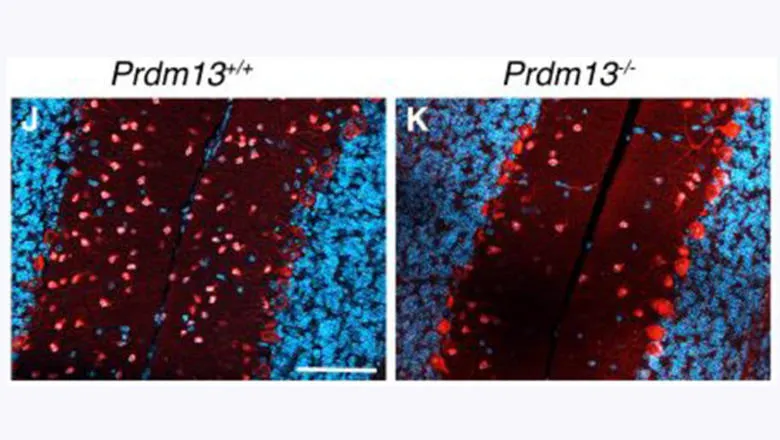10 November 2021
New recessive neurodevelopmental disorder identified
Academics at King's have reported a rare neurodevelopmental condition characterised by intellectual disability, ataxia with cerebellar hypoplasia and delayed puberty with hypogonadotropic hypogonadism (HH).

The Basson laboratory in the Centre for Craniofacial & Regenerative Biology at King’s, together with colleagues at UCL GOS Institute of Child Health and University of Milan have reported a rare neurodevelopmental condition characterised by intellectual disability, ataxia with cerebellar hypoplasia and delayed puberty with hypogonadotropic hypogonadism (HH).
Patients with this unusual combination of conditions were referred to Mehul Dattani (UCL). Affected individuals were found to carry the same homozygous mutation in the PRDM13 gene, which encodes a chromatin modifying factor that regulates transcriptional programmes involved in cell fate determination. Intriguingly, an unaffected heterozygous carrier of this mutation was identified by screening 42 unaffected individuals in the Maltese population, suggesting that this mutation is present at low levels in the population.
The Basson laboratory obtained a Prdm13-deficient mouse model from the Furukawa laboratory in Japan and set out to model this condition and identify the underlying causes. Dani Whittaker, a clinical fellow in the Basson laboratory, and Roberto Oleari in the Cariboni laboratory in Milan found evidence that both the cerebellar hypoplasia and reproductive phenotypes were caused by defects in the specification of specific populations of GABAergic neuronal progenitors in the developing cerebellum and hypothalamus, respectively.
These findings suggest that this condition is primarily a disease of abnormal cell fate specification during development. As a consequence, the hypoplastic cerebellum is deficient in molecular layer interneurons, which play critical roles in regulating cerebellar circuits. In the hypothalamus, fewer Kisspeptin neurons, which are important regulators of gonadotropin releasing hormone and puberty, were present in Prdm13 mutant mice.
Together, these findings identify PRDM13 as a critical regulator of neuronal cell fate in the cerebellum and hypothalamus, providing a mechanistic explanation for the co-occurrence of hypogonadism and cerebellar hypoplasia in this syndrome. This work was published in the Journal of Clinical Investigation: https://doi.org/10.1172/JCI141587
